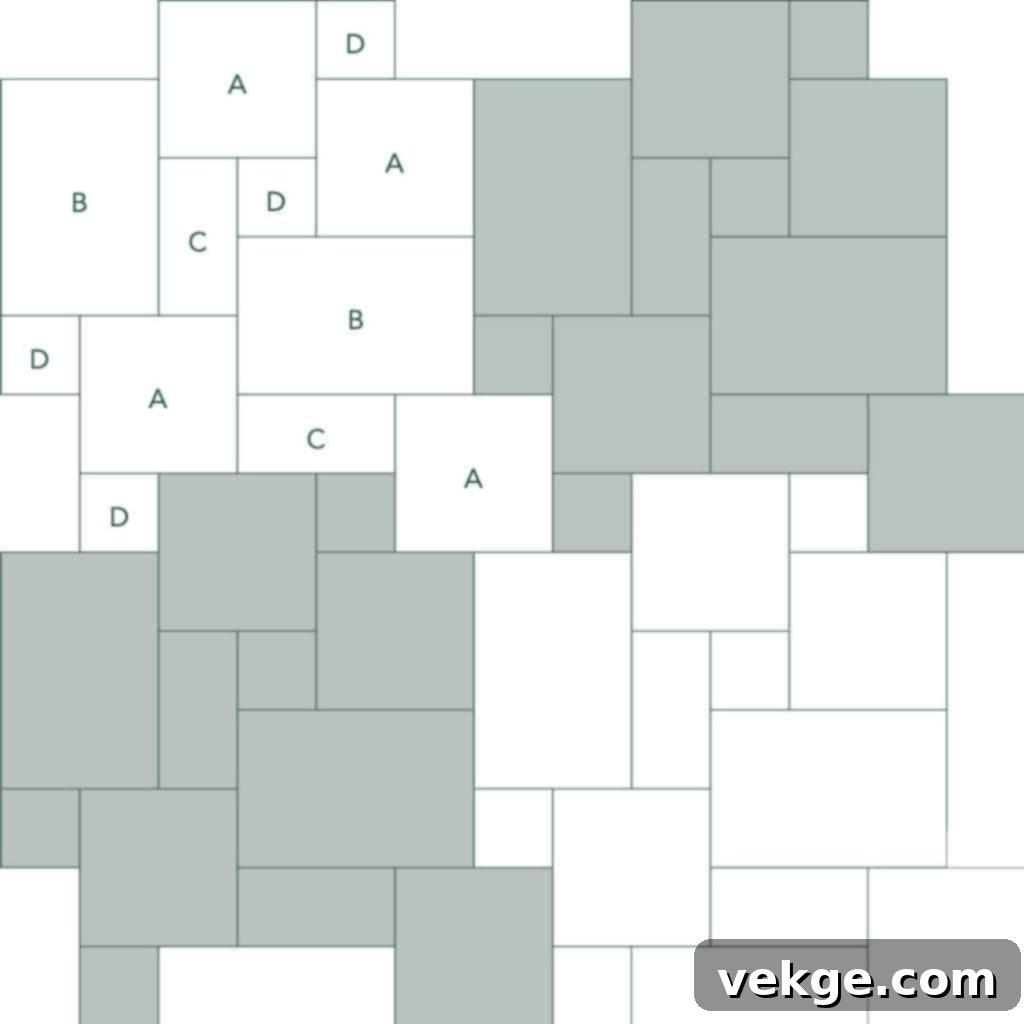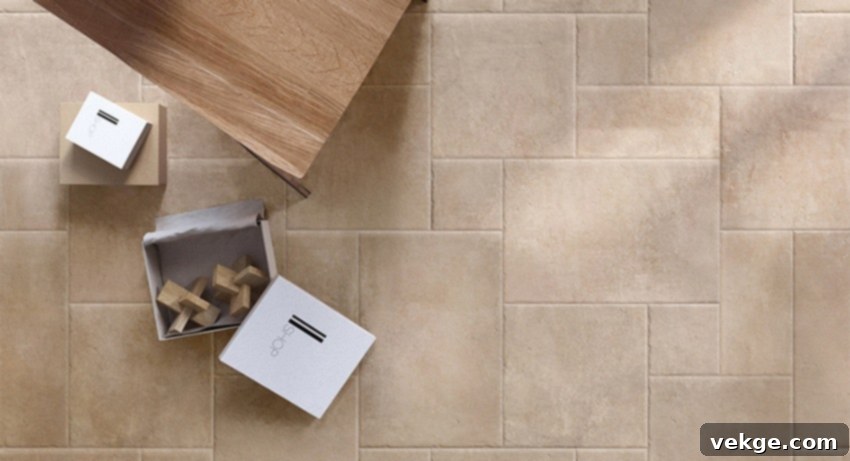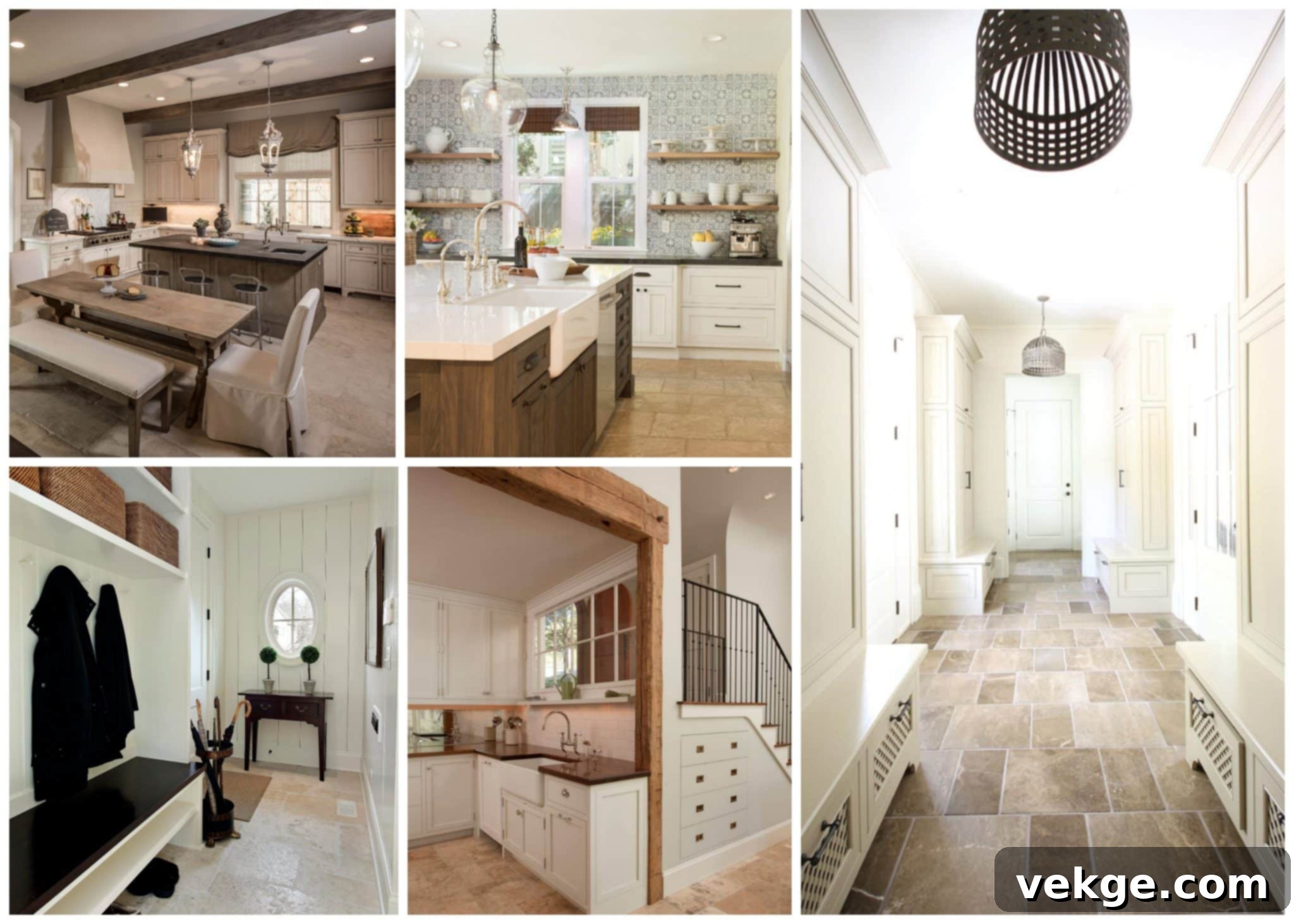Discover the Enduring Beauty and Benefits of Travertine French Pattern Tiles
Tiles have long been a cornerstone of both interior and exterior design, celebrated for their ability to introduce striking highlights and define the character of a space. As the focus on tiling intensifies for various surfaces—from walls and floors to staircases and backsplashes—an array of innovative designs continually emerges, aiming to offer fresh and vibrant aesthetics for every taste and setting.
Amidst these evolving trends, one particular style consistently remains at the forefront: the French pattern tile. Renowned for its rustic charm and timeless appeal, this distinctive pattern seamlessly integrates into both residential and commercial environments, contributing to a highly refined and sophisticated arrangement. Originating from the grand historical European palaces and monuments, this pattern has gracefully evolved over centuries. Today, it is available in a diverse range of materials, including classic options like travertine, as well as modern choices such as porcelain, marble, limestone, or shellstone.
While the market offers numerous compelling choices, our particular focus and admiration are currently captivated by travertine French pattern tiles. In this comprehensive article, we will delve into the unique features and compelling reasons that make travertine French pattern tiles stand out, illuminating why they are an exceptional choice for your next design project. Keep reading to uncover the remarkable qualities that elevate these tiles above the rest.
Unveiling the French Pattern Tile: A Timeless Design Legacy

Before we delve deeper into the unique characteristics that make travertine French pattern tiles so desirable, it’s essential to first understand what defines a French pattern tile itself. Also widely known as the Roman or Versailles pattern, this intricate design is a testament to classical architectural elegance, tracing its roots back to the lavish floors of ancient Roman villas and the opulent châteaux of the French countryside, most notably the Palace of Versailles.
Unlike standard tile installations that often feature uniform sizes arranged in a grid, the French pattern distinguishes itself through a carefully curated set of 12 tiles, comprising four different predefined sizes. These tiles are meticulously arranged to create a dynamic, interlocking pattern that resembles a sophisticated jigsaw puzzle. The beauty lies in its seemingly random yet perfectly orchestrated composition, which creates a sense of movement and visual interest that cannot be achieved with single-sized tiles. The only conceptual difference from a typical jigsaw is that while puzzle pieces are often uniformly sized but varied in shape, French pattern tiles come in specific, distinct sizes that fit together harmoniously to form a single, repeating module.
This unique approach to tiling ensures that each installation possesses a distinct character and depth, making it far more captivating than a conventional layout. The standard set of 12 tiles typically includes the following dimensions:
Type |
Size |
Quantity |
|
Small Square |
8” x 8” |
4 |
|
Large Square |
16” x 16” |
4 |
|
Small Rectangle |
8” x 16” |
2 |
|
Large Rectangle |
16” x 24” |
2 |
This precise combination of sizes, when correctly laid, forms a repeating, organic flow that is both visually engaging and historically resonant. While the French pattern can be rendered in various materials, it is the natural stone, travertine, that truly brings out its most compelling qualities, offering an unmatched blend of history, beauty, and practicality.
Why Travertine French Pattern Tiles Reign Supreme in Modern Design

Even though the elegant French pattern tile is available in a multitude of materials, it’s the travertine variant that consistently generates significant enthusiasm and captures the imagination of designers and homeowners alike. The reason for this widespread acclaim is not singular but rather a collection of exceptional qualities that travertine brings to this classic pattern. Let’s explore these special attributes that make travertine French pattern tiles an outstanding choice for any project.
1. Unparalleled Visual Aesthetics and Rustic Charm
The inherent vintage appeal and natural beauty of travertine French pattern tiles instantly elevate the aesthetic quality of any space. With its earthy tones, subtle veining, and unique porous texture, travertine imbues a sophisticated, old-world charm that feels both grand and inviting. When used in expansive courtyards, elegant staircases, welcoming hallways, or cozy living rooms, it imparts a subtle, classy feel that effortlessly becomes a focal point without being overpowering. These tiles are perfect for creating a minimal yet captivating highlight, stealing the spotlight with their muted charm. They serve as an ideal choice for accent walls, adding depth and character. Furthermore, the natural matte finish of travertine, especially when paired with thoughtful lighting, enhances the perception of space, making areas feel larger and more open.
2. Exceptional Versatility in Style and Application
Travertine French pattern tiles boast remarkable versatility, largely due to the stone’s natural variations. Available in a spectrum of shades—from light ivories and warm beiges to deeper browns and gold hues, depending on the mineral content—and various finishes (such as honed and filled, tumbled, brushed, or chiseled edge), they offer an extensive palette of options. Each finish imparts a different character: honed and filled offers a smoother, more refined look; tumbled provides a rustic, aged feel; brushed accentuates the natural texture; and chiseled edge adds a distinct, hand-crafted appearance. This wide array of choices allows interior designers and homeowners to tailor the tiles precisely to the needs and desired ambiance of different settings, seamlessly integrating this pattern into both traditional and contemporary designs, from quaint farmhouse kitchens to luxurious Mediterranean villas.
3. Seamless Integration Across Diverse Spaces
Beyond aesthetic versatility, travertine French pattern tiles offer practical advantages in terms of coverage and application. The modular set, comprising tiles of varying sizes, makes them incredibly adaptable for diverse uses. Apart from their traditional role on living room floors and walls, they excel in ledgers, intricate staircases, and captivating backsplashes. This unique sizing strategy allows for greater flexibility in design, enabling the same pattern to be used cohesively across different surfaces within a single room—or even throughout an entire property—without appearing monotonous. The varying tile dimensions also cleverly help in covering uneven surfaces more seamlessly than uniform tiles, and they are particularly convenient for atypical areas or complex layouts where standard tiling might prove challenging.
4. Creating Flow and Continuity Between Zones
The distinctive jigsaw-style interlocking of travertine French pattern tiles is not just visually appealing; it’s also a powerful tool for achieving design continuity. Using the same tile design enables designers to create an effortless flow when transitioning between indoor and outdoor spaces. This crucial feature prevents an abrupt and visually jarring break, especially on floors, fostering a harmonious and expansive feel throughout a property. Imagine extending the elegant flooring of your living room onto an adjacent outdoor patio or a winding garden path—the consistent pattern seamlessly connects these areas, making the entire space feel larger, more cohesive, and incredibly eye-catching. This continuity enhances the architectural integrity and creates a sophisticated, unified aesthetic.
5. Enduring Durability and Low Maintenance
Travertine tiles are inherently robust and, as a natural stone, offer exceptional durability and resistance to mechanical damage. This makes them a highly practical choice for both high-traffic residential areas and busy commercial settings. They are also relatively easy to maintain, and with proper sealing, they demonstrate good resistance to stains, ensuring they retain their fresh appearance for an extended period. A notable advantage of the French pattern, with its increased number of grout lines compared to large-format tiles, is enhanced friction and superior slip resistance. These qualities make travertine French pattern tiles an excellent and safe option for areas exposed to moisture, such as pool decks, shower floors, and kitchen backsplashes, providing both beauty and peace of mind.
6. Natural Cooling Properties for Comfort and Efficiency
One of the less-known but highly beneficial attributes of travertine tiles is their natural ability to provide a cooling effect. Due to their porous nature and typically light color palette, travertine surfaces absorb less heat from direct sunlight compared to darker materials. Instead, they reflect heat, contributing to a naturally cooler surface temperature. This makes them a top priority tile type, particularly in warm regions and for upper floors of buildings. By helping to maintain lower indoor temperatures, travertine tactfully assists in energy conservation, reducing the reliance on air conditioners and cooling systems, thereby leading to lower energy consumption and costs. This eco-friendly characteristic adds significant value, especially in climates where cooling is a constant concern.
7. A Smart and Cost-Effective Investment
Despite their luxurious appearance and natural stone origins, travertine French pattern tiles are often comparatively more cost-effective than many other natural stone options. This affordability extends beyond the initial purchase, encompassing reasonable installation costs (given the modular nature) and straightforward maintenance. These tiles offer excellent value without compromising on functionality, aesthetics, or durability. Moreover, the different sizes within the French pattern set facilitate easier and more economical replacements should an individual tile become damaged, as only the affected tile needs to be changed, rather than a larger, more complex section. Investing in travertine French pattern tiles not only enhances your immediate living environment but also significantly increases the resale value of your home, making it a wise and financially sound decision.
Installation & Maintenance Tips for Travertine French Pattern Tiles
To fully capitalize on the beauty and longevity of your travertine French pattern tiles, proper installation and ongoing care are essential. Given the intricate nature of the multi-size pattern, it is highly recommended to engage professional tile setters experienced with French patterns to ensure a flawless and aesthetically pleasing result. After installation, sealing your travertine tiles is a crucial step. Travertine is a porous natural stone, and a high-quality penetrating sealer will protect it from stains, moisture absorption, and general wear and tear, enhancing its durability and making cleaning much easier. Regular cleaning typically involves sweeping or vacuuming to remove loose debris, followed by mopping with a pH-neutral cleaner specifically designed for natural stone. Avoiding harsh chemicals and abrasive tools will help preserve the tile’s finish and natural beauty for many years to come.
Final Thoughts: Embrace the Timeless Allure
The French pattern, when paired with the inherent elegance of travertine, creates an unconventional yet classic aesthetic—it’s no wonder that travertine French pattern tiles are revolutionizing the home design industry. This perfect coupling of ornamental beauty and robust utilitarianism is truly captivating. Still not entirely convinced? Consider the added layers of practicality, from enhanced durability and natural cooling properties to significant cost-effectiveness and increased property value. We are confident that you will be as thoroughly impressed by these remarkable tiles as we are!
Travertine French pattern tiles are undoubtedly turning heads, offering a design solution that is both visually stunning and exceptionally functional. This trend is here to stay, grounded in all the right reasons. Now, before you embark on browsing designs for your new home or renovation project, we invite you to share your thoughts. What aspect of travertine French pattern tiles appeals to you most, and why would you choose them for your space? Let us know in the comments section below.
Do you already enjoy the beauty of French pattern travertine tiles in any part of your home or office? We’d love to hear about your experiences. What do you like most about them, and what kind of compliments do your guests offer? Share your stories and insights with us in the comments!
